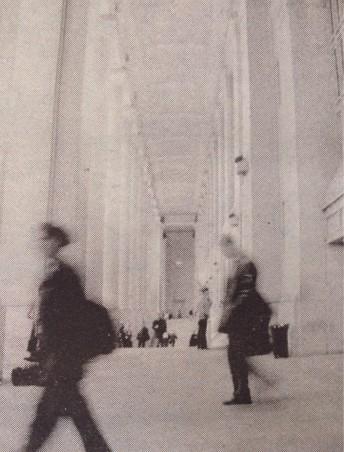By Jonathan Spicer
A couple of Ryerson students are backing a local push to make sure that Union Station’s future is planned with public input.
First-year urban planning students Rob Hines and Alvin Ying have written a petition, rallied student support and attended meetings of the Save Union Station Committee, created to press City Council for details of the train station’s secret redevelopment plan.
“We want to educate the public as to why this matters, because sometimes, without education, people don’t know how much is at stake,” Ying said, adding that a lot of Ryerson students rely on GO transit.
At the beginning of August, council voted to appoint a local consortium known as the Union Pearson Group Inc. to restore, develop and operate the historic, city-owned train station. The group won the contract by a 34-2 vote, which gives them development rights for 10 years and leasing rights for 99 years.
However, the bid process was closed to the public. Since then, there has been little information available to the public about the bidding process or even the details of the winning proposal.
Hines says council is trying to protect the business interests of the city and the Union Pearson Group because they have a profit to make from the deal. “But the inherent flaw in that is that all parties’ interests include municipalities, and they are directly accountable to citizens, who are not allowed to know what’s going on.”
The deal almost certainly has ramifications for the lucrative air rights — the option to build towers — above the tracks behind Union Station, but so-called “confidentiality rights” prevent anyone from discussing exactly what this means. The value of air rights over the station, the most expensive piece of real estate in the country, has been estimated at as high as $300 million.
Union Station, which was twice prevented from redevelopment by public outcry in the 1970s, was designed in the early 20th century by several architects. Its Great Hall is considered one of the city’s most impressive interior spaces and is ringed by the names of the towns and cities served by trains that once linked Canada together.
Some details of the two competing proposals were leaked to newspapers in September. The losing bid, which was submitted by a Chicago-based group that headed the restoration of Grand Central Station in New York, included a proposal to knit downtown Toronto back to the waterfront area south of the Gardiner Expressway with a rooftop public plaza. The Toronto-based winning bid, which was deemed to have better financial backing, includes plans for a shopping concourse inside the station’s Great Hall.
“Keeping it Canadian doesn’t mean sacrificing excellence,” Ying said. “It shouldn’t come as an excuse for mediocrity.
According to a “lobbying disclosure form” that Union Pearson Group submitted to the city clerk, 30 councillors were personally approached by big business and national political party representatives looking to secure the deal; Ying believes that this gave the local group an unfair advantage.
“Winning a bid because of political connections and local power is morally wrong, to say the least,” he said.
Since early October, Ying and Hines have been in contact with former Toronto mayor John Sewell, who organized the Save Union Station Committee, and are looking at ways to coordinate efforts with other local groups, faculties and universities.
“We want to get the point across to students and see if there’s interest,” Hines said.
The two students have created a poster design and petition, which will be circulated around campus, as well as an email address, saveunionstation@yahoo.ca, for interested students to join or get information.
The Save Union Station Committee is hosting another public meeting on Nov. 4 at the ST. Lawrence Centre for the Arts, where urban philosopher and writer Jane Jacobs and Globe and Mail municipal columnist John Barber will speak on the issue.
“We hope [our efforts] will be conduit for the students at Ryerson, maybe get them motivated and try to get them engaged in the action, whatever that action may be,” Hines said.
“Hopefully there will be enough momentum to at least find out the details of the deal and then … eventually have a public consultation before the decision is made about who gets the contract. That’s the ultimate goal.”











Leave a Reply